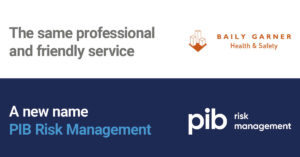Dichloromethane (DCM) (also known as methylene chloride) is a highly volatile solvent. Small volumes will readily give off large amounts of vapour, even at room temperature, this vapour is colourless, heavier than air and has a low odour.
DCM can be used in paint stripping operations, including stripping surface coatings from alloy wheels. DCM based adhesives may also be used in a number of applications e.g. laying floor tiles.
There are a number of hazards associated with DCM:
- Breathing in vapour can affect the central nervous system, causing symptoms such as headaches, lethargy, lack of coordination, nausea and impaired consciousness
- Exposure may aggravate symptoms for those with heart and/or lung problems
- Exposure can burn the skin, or cause irritation leading to dermatitis and can irritate and burn the eyes.
- DCM is suspected of causing cancer and exposure to high concentrations can cause death.
Where practical hazardous substances should be substituted for less hazardous ones, however this is not always possible so where DCM based products are used it is important that risks are assessed and suitable controls put in place to avoid or minimise exposure. In particular DCM-based products should ONLY be used in well ventilated areas to prevent the build-up of vapour.
The HSE advise that for paint stripping at transient workplaces, only those trained and holding an official Certificate of Competence are allowed to use DCM-based paint strippers. A certificate can be obtained from the Health & Safety Executive following the successful completion of training and an online exam. While a certificate is not required for the use of DCM-based adhesives, the risks are similar.
The HSE have recently updated their guidance for working with Dichloromethane. The guidance explains the controls that would be required for brushing or spraying adhesives and paint strippers and permanent and transient workplaces and stripping surface coatings from alloy wheels.
The updated guidance can be downloaded from the HSE’s website at: https://www.hse.gov.uk/coshh/essentials/direct-advice/dichloromethane.htm
Please speak to your normal PIB Risk Management contact or get in touch using [email protected] if you have any questions regarding working with hazardous substances or would like assistance with assessing and managing risk in your workplace.

A new name for Baily Garner (Health and Safety) Limited

50 Years of the HSE and the Health & Safety at Work Act

Building Fire Safety Updated Approved Document B Published

Protecting Properties Against Flooding

The Building Safety Act – Are you meeting your legal responsibilities?
